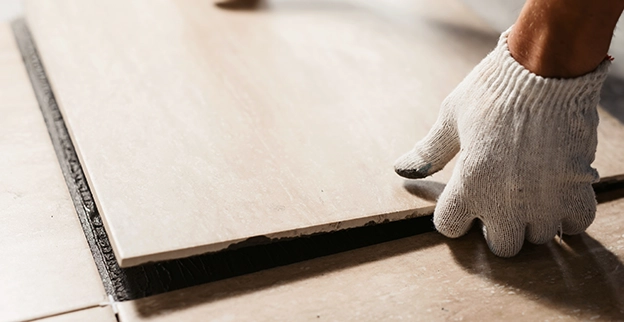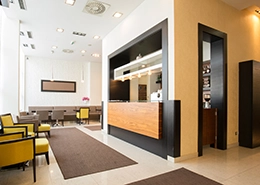Take a look around your home. There are likely many types of tile across your kitchen and bathroom walls and floors. Tile is also an excellent option for outdoor kitchens and patios, and thankfully, the process for a regular tile repair project remains the same no matter what type of tile flooring or walls we're dealing with or where it's situated in your home–including both budget-friendly and luxury tile options. A few of the most common issues we repair in tile include:
Damaged Grout
Grout fills the gaps between your tiles and creates stability and structure. It applies as a thick liquid and dries, hardening to support your tiles and keep them in place. Grout is one of the final steps taken during tile replacement or installation, helping to protect your subfloor and walls from water damage. If you have damaged grout, there's a chance your subfloor or walls could become damaged too. This particular type of damage can lead to mold growth and the weakening of support structures behind your walls and under tiling. To repair damaged grout, we'll need to chip away the affected sections and apply new grout. Depending on when the last time your grout was replaced, it may make sense to redo it completely.
Cracks & Chips
While ceramic and porcelain tiles are excellent choices for your backsplash and floors, they often experience chipping and cracking. Even natural stone surfaces, which are slightly more durable, have their limits. To repair cracked tiles, we can either fill the crack with epoxy or replace the entire tile. Chips can be repaired in a similar fashion; however, if your tile floor or wall tiles have excessive damage, we may recommend replacing them altogether. Cracks can be the product of foundation damage and shifting, so if you have multiple cracks in your tile, it's best to call a professional handyman for an inspection.
Broken or Loose Tile
Completely broken individual tiles are best replaced instead of repaired. Loose tiles can be repaired by reinstalling them and re-grouting. Whichever issue you are facing, some sort of re-installation will be required. To do this, we'll remove the loose or broken tile, perform surface preparation, remove the old tile adhesive, and apply new adhesive to the back of the tile. We'll then press the tile to the surface and re-grout its perimeter.
The materials tile is made from vary, but no matter the square footage of tile that's affected or the type of tile installed, you can count on your qualified West Hartford handyman for help.






